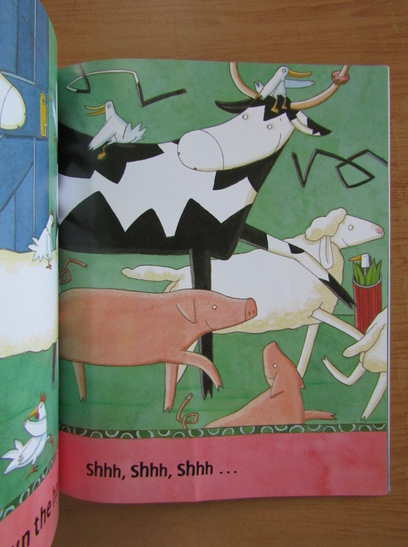

Cows can’t type! Cows don’t use electric blankets! Look closely at the illustrations for some surprises. A Caldecott Award winner for its bold and whimsical illustrations, this book is reportedly humorous to even two year-olds. “Click, Clack, Moo: Cows that Type,” written by Doreen Cronin, illustrated by Betsy Lewin. Pigs in the pantry? Ducks in the dishes? Hens on the hat stand? Silly, silly, pre-school silliness! “Cows in the Kitchen” by June Crebbin, illustrated by Katharine McEwen. I will have one more breakfast, please, but just a small one.” From there, you won’t believe who joins them for a muffin! “Would you like another breakfast, dear?” Mrs. One rainy morning a husband and wife are having hot, corn muffins for breakfast.

“Rainy Morning” by Daniel Pinkwater, illustrated by Jill Pinkwater. Q: How do you start a lightning bug race? A: On your mark! Get set! Glow! and Q: What does a fruit fly do in a cornfield? A: goes in one ear and out the other! Look for the many other riddle books by these two authors. This is a book of riddle just right for a young child. “Buggy Riddles” by Katy Hall and Lisa Eisenberg, pictures by Simms Taback. Submarine or a housefly that danced? Characters changing places and play on words make stories silly and encourage creative thinking. What if animals took over a farm for the farmer? What if cows could type? What if you knew a woman named Mrs.

Children age 3 to 4 and up can start appreciating how something should be, and then the funny alternative way it is described in words and pictures. Humor can work wonders! A lot of humor is based on portraying a skewed view of a normal situation. Humor can help create friendships, make difficult situations easier, and can make children beg for more books. By Katrina Morse for Family Reading Partnership


 0 kommentar(er)
0 kommentar(er)
